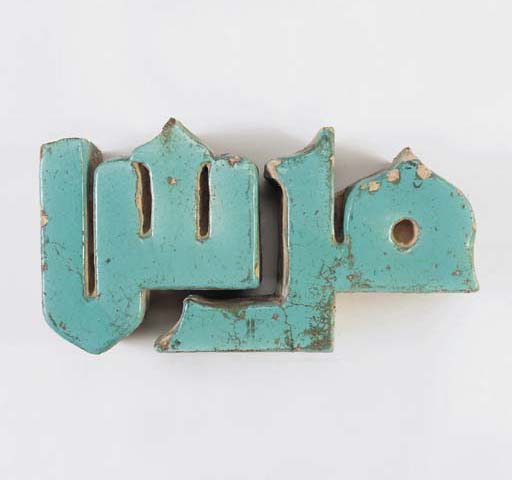

Two inscription tiles molded in the shape of letters, Iran, 12th c.
Source: http://www.christies.com/LotFinder/search/LOTDETAIL.ASP?sid=&intObjectID=4272513&SE=CMWCAT03+679030+%2D721250625+&QR=M+1+0+Aqc0000900+646511++Aqc0000900+&entry=india&SU=1&RQ=True&AN=1
(downloaded Apr. 2004)
"TWO MOULDED TURQUOISE GLAZED MONUMENTAL INSCRIPTION TILES, PROBABLY NISHAPUR, NORTH EAST IRAN, 12TH CENTURY. Each tile moulded with two completely three-dimensional kufic letters, one with mim and re, the other with sin and alif, shaped terminals, covered with an opaque turquoise glaze, chips to edges, re repaired, mounted in a wooden case. Overall 6¾ x 13 3/8in. (17 x 33cm.) (2)
Lot Notes" Massive turquoise glazed inscriptions set against brick or
unglazed pottery grounds are a feature of a number of mediaeval mosques in Iran
(Pickett, Douglas: Early Persian Tilework, the Medieval flowering of Kashi,
Cranbury NJ, London and Mississauga, 1977, pls. 6-15 for example). A tile which
would have been an upper terminal to a similar inscription as is found here
was sold at Sotheby's London, 13 April 2000, lot 72."